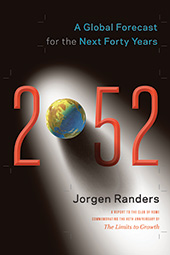What the Future May Bring
In his latest book, sustainable development expert Jorgen Randers offers an analysis of what the world will be like in the year 2052. It’s not a pretty picture.

Randers predicts that the climate will continue to change, leading to more extreme weather events and floods.
Many authors writing about the future dismiss doubts and contrary opinions, striving with provocative titles such as The End of History and the Last Man (by Francis Fukuyama) or The Singularity Is Near: When Humans Transcend Biology (by Ray Kurzweil) to persuade readers that the future they envision is not only plausible but inevitable. Thankfully, Jorgen Randers foregoes this temptation in his new book, 2052: A Global Forecast for the Next Forty Years (White River Junction, Vermont: Chelsea Green Publishing, 2012).
Randers, an expert on business and sustainable development and currently a professor of climate strategy at BI Norwegian Business School, offers a nuanced analysis of the state of the world today and a forecast for global development for the coming decades. It’s not a pretty picture. Writing in the first person, Randers is not shy about discussing his worries about the resource, environmental and societal challenges the world faces. “I have lived my whole adult life worrying about the future,” Randers admits. His candor and expertise, gained over decades of work in sustainable development for businesses and governments, yield a book well worth reading and discussing with colleagues, friends and family.
In an interesting twist, Randers invited other experts to share their thoughts on the world of 2052. Their views on topics including population, food, energy, urbanization, culture, the future of capitalism and the role of spirituality are presented throughout the book as “Glimpses.” Randers also invites readers to participate: Through an associated website, www.2052.info, he provides his models for you to examine and modify.
So what does Randers expect the world of 2052 to be like? First, some background. In 1972, Randers, then a doctoral student at MIT, was one of the authors, along with William W. Behrens III, Dennis L. Meadows and the late Donella H. Meadows, of the groundbreaking book The Limits to Growth. Drawing on system dynamics work pioneered by Jay W. Forrester, Randers and his coauthors developed a simulation model that integrated population, economic activity, resources and the environment and then used it to examine future scenarios.

Comments (2)
pete
frankml